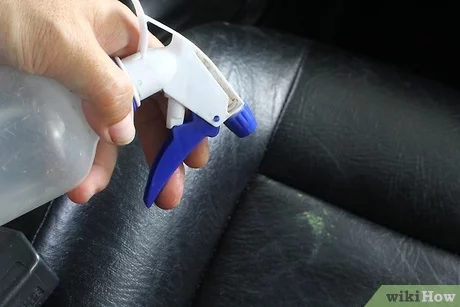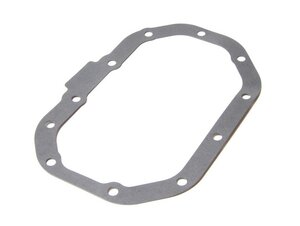
How to clean leather seat paint
Content
Leather seats are well known for their durability and ease of cleaning, but they are not free from permanent stains from materials such as paint. Paint can get onto your car's interior leather in a number of ways, including:
- Dripping nail polish on the seat
- Leaving the car window open while painting the car
- Transferring wet paint from a dirty shirt, trousers, or hands
Regardless of how it happens, you need to get the paint off of your leather as soon as possible to prevent long-term damage or blemishes.
Method 1 of 3: Remove wet paint from the surface
As soon as you notice paint on the skin of your car, take immediate action. You can prevent hours of hard work and permanent damage by removing wet paint from leather as soon as it appears.
Necessary materials
- Clean rags
- Cotton swabs
- Olive oil
- Warm water
Step 1: Remove wet paint with a clean cloth.. Lightly blot the paint, being careful not to press the paint deeper into the skin.
- A warning: Do not wipe the paint. The wiping motion will push the paint and dyes deeper into the surface and spread to other parts of the seat.
Use a rag to pick up as much of the wet paint as possible, always using a fresh stain on a clean cloth.
Step 2: Run a dry Q-tip over the paint stain.. A non-abrasive, dry cotton swab will gently pick up more paint from the leather seat.
Repeat this with a fresh cotton swab (Q-Tip) as many times as you need until the color no longer comes off the skin.
Step 3: Wipe the stain with a cotton swab dipped in olive oil.. Dip the end of the Q-tip in the olive oil, then very gently rub the wet end of the Q-tip over the fresh paint.
The olive oil will prevent the dye from drying out and allow it to soak into the swab.
- Attention: Mild oils such as olive oil do not damage skin dyes.
Step 4: Remove the olive oil from the paint stain with a rag.. The olive oil and dye will soak into the fabric, removing it from the skin.
Step 5: Repeat steps as needed until skin is completely free of ink..
If the paint stain is still present and repeating this process no longer helps, try the next method.
Step 6: Wipe off any leftovers. Wipe the leather seat one last time with another clean cloth dampened with warm water to remove excess grease without drying the leather.
Method 2 of 3: Remove dried paint
Necessary materials
- Clean cloth
- Cotton swabs
- Nail polish remover without acetone
- Olive oil
- scraper knife
Warm water
A warning: Dried paint is very likely to leave an indelible mark on a leather seat. It is important to take great care at each step to minimize any damage.
Step 1: Lightly scrape off loose paint with a scraper.. Press the blade very lightly into the paint as you scrape, avoiding contact with the skin surface to prevent scratching the skin.
Any raised areas of paint can be very carefully scraped off the top, being careful not to cut through the paint on the skin.
Wipe off loose paint with a clean, dry cloth.
Step 2: Soften the paint with olive oil.. Olive oil is gentle on the skin and is an excellent moisturizer. This can help soften paint that is still stuck to the leather seat.
Use a cotton swab to apply the olive oil directly to the paint, applying it in small circles to loosen the paint.
Step 3: Gently scrape off softened paint. Gently scrape off the softened paint with a scraper, then wipe with a clean cloth.
Step 4: Wipe the seat clean. Wipe down the seat with a clean cloth dampened with warm water and evaluate your progress.
If the paint is still visible, you may need to use a more aggressive chemical to dissolve it.
Step 5: Assess your options. If the paint is barely visible, you can stop the removal.
If the paint is quite visible or you want it to disappear completely, continue to use a harsher chemical.
- A warning: The use of chemicals such as acetone and rubbing alcohol on car leather may cause permanent staining or physical damage to the leather.
Before trying it on the seat, test the chemical on a hard to reach area to see how it reacts.
Step 6: Apply nail polish remover without acetone.. Use a cotton swab dipped in nail polish remover instead of applying it directly to your skin.
Wipe off the ink with the end of the Q-tip, being careful not to go beyond the edge of the ink.
Step 6: Wipe with a clean cloth. When the paint is wet with nail polish remover, gently blot it with a clean cloth or gently wipe it with a dry Q-tip.
Be careful not to smudge the wet paint over its current area.
Repeat as needed until the dye is completely removed from the skin.
Step 8: Wipe the seat clean. Wipe the seat with a damp cloth to neutralize the chemical on the seat.
Method 3 of 3: repair damaged skin
Necessary materials
- Clean cloth
- Skin conditioner
Step 1: Condition your skin. Nail polish remover or other chemicals can dry out the leather or remove some of the paint, so it's important to add a conditioner to prevent and repair damaged leather.
Wipe the leather conditioner all over the seat. Spend more time wiping off the paint stain you just cleaned up.
This alone may be enough to hide the stains left by the paint blotch.
Step 2: Paint the exposed skin. It is almost impossible to choose a paint for the skin on your own.
If the area where the paint used to be is clearly visible, find an upholstery repair shop that specializes in leather repairs.
Let the shop pick up the paint and tint the seat as best as they can.
It may not be possible to completely hide the damage, although the choice of dye will minimize the appearance of the stain.
Step 3: Take care of your skin regularly. With continued use of a leather conditioner every 4-6 weeks, the repaired stain may eventually blend into the environment.
A paint stain on a leather seat can be very nasty, but you can restore the seats to their original and elegant look. By carefully following the steps above, you should be able to remove most, if not all, of the dye from your skin.
